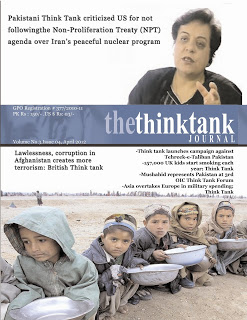The EU-US tariff agreement, finalized on July 27, 2025, is sending shockwaves through Germany’s economic landscape. This deal, brokered by European Commission President Ursula von der Leyen and US President Donald Trump, imposes a 15% tariff on most EU exports to the US, a stark jump from the previous 1% rate, while allowing US goods tariff-free access to Europe. German economists and policymakers are sounding the alarm, labeling it a “drama” for the export-driven nation, while others see a fragile ceasefire offering strategic breathing room.
The Economic Burden: Germany Feels the Pinch
A Heavy Toll on Exports
Ulrike Malmendier, a key member of the German Council of Economic Experts and a professor based in California, minced no words on ARD, calling the 15% tariff an “enormous burden” for Germany’s economy. With exports accounting for 47% of Germany’s $4.5 trillion GDP in 2024, per the Federal Statistics Office, this tariff hike threatens industries like automotive (BMW, VW) and machinery, which saw $180 billion in US exports in 2024, per Destatis. Malmendier warned of significant impacts on individual companies, with the Kiel Institute projecting a 0.15% GDP drop—around €6.5 billion—in 2025 alone. German Economy Minister Katherina Reiche echoed this, noting the challenge for exporters during a July 29 visit to a Leuna chemical factory.
Steel and Aluminum Woes Persist
The deal’s failure to lift the 50% tariffs on EU steel and aluminum imports, a lingering sore point, adds to the strain. The ArcelorMittal plant in Bremen, employing 2,300, faces potential layoffs, with IG Metall estimating 10,000 jobs at risk nationwide. Deputy government spokesman Sebastian Hille confirmed ongoing negotiations, signaling hope for relief, but the uncertainty keeps steelmakers—exporting $40 billion annually—on edge, per a 2025 BDI report.
Uncertainty Clouds the Horizon
Malmendier admitted the overall economic impact remains hard to gauge, with sectors like chemicals and electronics facing unpredictable supply chain costs. The German Chambers of Commerce (DIHK) predict a 5% rise in production costs for exporters by year-end, potentially eroding competitiveness against US rivals, where domestic firms benefit from tariff-free access.
Silver Linings: Potential Consumer Gains
Despite the gloom, Malmendier highlighted a silver lining: diverted trade flows. Countries like China and Japan, hit by US tariffs, may redirect goods to the EU, potentially easing inflation. With Germany’s consumer price index at 2.1% in June 2025 per Destatis, this influx could lower prices for electronics and textiles, offering relief to households strained by a 1.5% wage growth lag. However, experts caution this benefit hinges on global supply adjustments, which could take months to materialize.
A Strategic Pause
Trade expert Laura von Daniels of the German Institute for International and Security Affairs (SWP) described the agreement as “a kind of ceasefire,” buying time by sidelining contentious issues like service taxes and AI regulations. Signed on July 27 in Scotland, it includes a 15% tariff on most EU goods, plus $750 billion in US energy imports and $600 billion in European investments. Von Daniels noted, “German companies, in particular, are now benefiting from this,” as it delays further Trump-imposed pressures, with his August 1 deadline averted.
Government’s Mixed Response
Chancellor Friedrich Merz praised the deal on July 28, crediting von der Leyen and Trade Commissioner Maros Šefčovič for averting a trade war that could have cost €93 billion, per EU estimates. “The unity of the European Union and the hard work of the negotiators have paid off,” Merz said, pledging support for future talks. Yet, he acknowledged gaps, wishing for more trade facilitation, while Hille flagged steel and aluminum as priority areas, reflecting a cautious optimism.
Uneven Impact Across the Bloc
The 15% tariff hits Germany hardest but ripples across the EU. France’s $10 billion wine export market to the US faces a 15% hit, per a 2025 French Customs Service report, while Ireland’s $155 billion pharma sector braces for cost increases. Duty-free US access, however, could flood Europe with $200 billion in goods annually, per Oxford Economics, challenging local producers and widening the €1.7 trillion transatlantic trade gap by 5% in 2026.
Market Stability vs. Long-Term Risks
The deal lifted European stock indices by 2% on July 28, per Bloomberg, offering short-term stability. However, the Kiel Institute forecasts a 0.11% EU GDP dip in 2025, with Germany bearing 60% of the burden. The lack of clarity on sector-specific tariffs—wine, spirits, and tech—fuels volatility, with investors on X debating a “fragile truce” versus a “surrender.”
Geopolitical Realignment
The energy import commitment ties Europe to US fracking gas, clashing with the EU’s 2035 net-zero goal, per a July 2025 Climate Analytics report. This could strain relations with climate-focused states like Sweden, while strengthening US leverage. Von Daniels urges the EU to use this respite to reduce dependencies on both the US and China, a strategy gaining traction amid 2025 tensions over rare earth imports.
Economic Resilience
Germany’s export model, reliant on the US market, faces a reckoning, pushing for diversification into Asia ($300 billion trade potential by 2027, per HSBC).
Consumer Dynamics
Lower inflation from redirected trade could boost purchasing power, with a projected 0.5% price drop by Q1 2026, per Ifo Institute, aiding 82 million German consumers.
EU Unity Test
The deal exposes fissures—Germany’s industrial focus versus France’s agricultural concerns—challenging the bloc’s cohesion ahead of 2026 trade talks.
The EU-US tariff deal casts a long shadow over Germany’s economy, with a €6.5 billion GDP hit, steel job losses, and export challenges at its core. While a ceasefire offers breathing room and potential consumer relief, the 15% tariff and unresolved steel tariffs signal ongoing strain. For Europe, the deal’s uneven impact and geopolitical ties test market stability and unity. With Merz backing further negotiations and von Daniels advocating strategic shifts, the path forward demands bold adaptation. Will Germany weather this storm, or is this a prelude to a larger trade reckoning?



